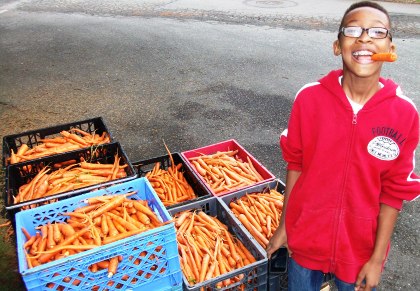
Developing strong, positive and professional relationships with farmers is imperative to the growth of your program. In the first year, focus on establishing relationships and trust with the farmers by being reliable and consistent in your interactions. Once a solid partnership has been established between your organization and a farm, you can explore the possibility of developing a weekly glean on a regular schedule. This will result in streamlined coordination with farmers and food banks, a committed volunteer pool, community building among volunteers and farmers, as well as consistent donations that you can plan around and anticipate.
Each farm has a different culture that requires flexibility in process and approach. For instance, some farmers work alongside the gleaners after demonstrating how to harvest the crops, while others do not interact with volunteers at all, and instruct the gleaning coordinator on what to harvest and where the crop is located over the phone the day prior. The relationship with the gleaning coordinator will likely develop as the season progresses and the farmer feels more comfortable with the coordinator and the volunteers.
When working with multiple farm partners, it is advised to develop a system to track information relevant for each farm including address, directions, parking, and any farm-specific rules. When planning gleans at these farms, the gleaning coordinator can refer back to this form for guidance and communicate relevant information to the volunteers who will be attending the event. It is advised to review this information with the farm partners at the start of each season to update and ensure accuracy.
In preparation for any gleaning event, the gleaning coordinator will speak with the farmer on the phone. Questions to ask during the phone conversation include:

-
What type of crop is available?
-
Where is the available produce located?
-
Which specific beds are available to be gleaned?
-
Are there other similar crops in the area that are not available for harvest by the gleaners?
-
What is the best method for harvesting?
-
Is there anything else I should know?
-
Do you have any specific techniques or tools that they prefer that we use?



